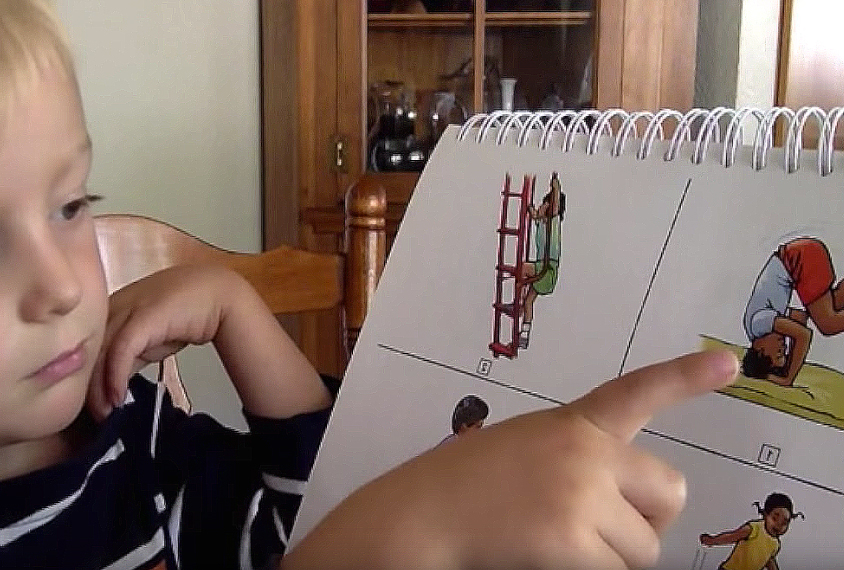
Amy Boelé
THIS ARTICLE IS MORE THAN FIVE YEARS OLD
This article is more than five years old. Autism research — and science in general — is constantly evolving, so older articles may contain information or theories that have been reevaluated since their original publication date.
A picture-based test is a fast and flexible way to assess verbal intelligence in large studies of people with autism, a new study suggests1.
Researchers use a series of tests to measure an individual’s verbal and nonverbal intelligence quotient (IQ). Verbal assessments typically require spoken responses, however, potentially underestimating intelligence in children with autism who speak few or no words. What’s more, the IQ battery can take more than an hour to administer.
The picture-based test, called the Peabody Picture Vocabulary Test, Fourth Edition, takes 15 minutes or less. Participants respond to instructions by pointing to one of four illustrations that represents a particular word. For instance, the administrator may say, “Point to ‘catching,’” or “Show me ‘gigantic.’”
The pictures are organized into sets of increasing difficulty, based on the words they stand for. The administrator chooses an initial set based on the participant’s age and moves on to harder sets until the child makes a certain number of errors. The participant receives an age-adjusted score with an average of 100, as with a traditional IQ test.
Accurate gauge:
In the new study, researchers analyzed IQ scores of participants in the Simons Simplex Collection, a registry of more than 2,600 families, each of which have one child on the spectrum. (The registry is funded by Spectrum’s parent organization, the Simons Foundation.) Of the 2,658 children with autism in the database, 2,420 had completed the Peabody as well as standard tests of verbal and nonverbal IQ.
Scores on the Peabody correlated with those on verbal tests, although they were about five points higher on average. This suggests that the picture test slightly overestimates verbal IQ. Alternatively, it may be a more accurate way to gauge IQ in people with low verbal ability than using standard tests, the researchers reported 28 January in the Journal of Autism and Developmental Disorders. The Peabody scores also track with results on nonverbal IQ tests, but less than with the verbal tests.
The tool could speed studies that require assessing cognition in thousands of people, such as those geared toward finding autism-linked genetic variants. The test also accommodates people with a wide range of abilities, and children as young as 2 years old. A person can score as few as 20 points on this test, whereas traditional tests bottom out between 30 and 50.
Some people with autism have dramatically different verbal and nonverbal IQ scores, however. Using the Peabody to estimate verbal IQ without separately testing nonverbal IQ would not capture that discrepancy.